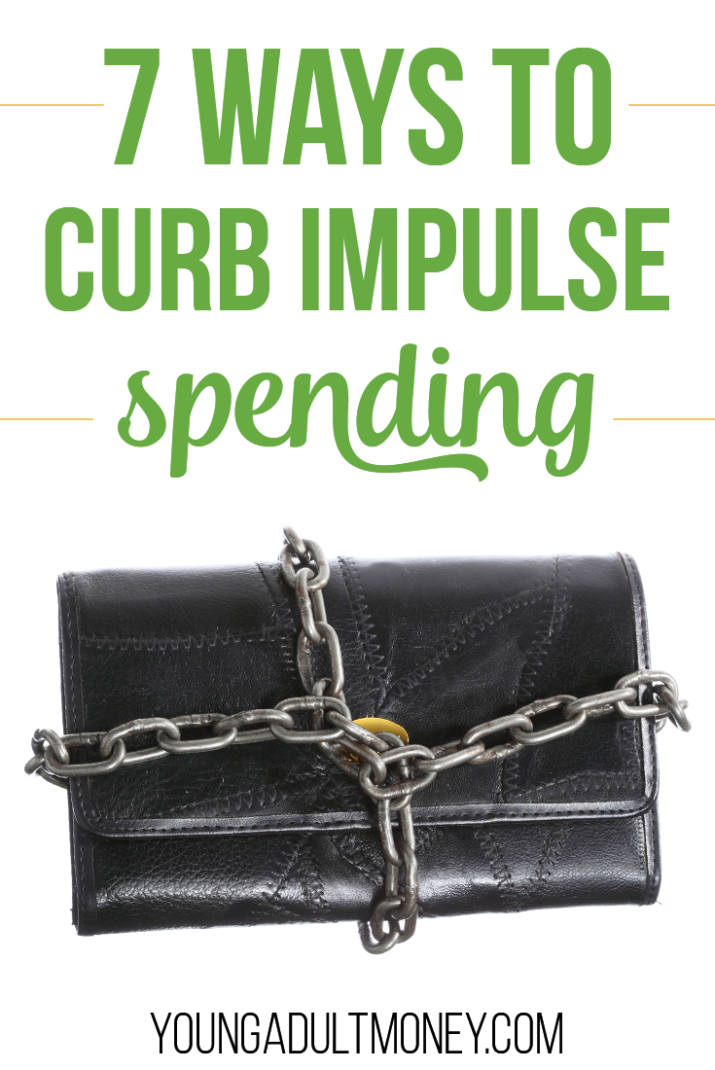 One of the biggest threats to your finances and monthly budget is impulse spending, the overwhelming urge you get to buy the shiny new thing you see in front of you.
One of the biggest threats to your finances and monthly budget is impulse spending, the overwhelming urge you get to buy the shiny new thing you see in front of you.
We’ve all been culprits of impulse spending. It could be small purchases here and there or excessively splurging on big ticket items like electronics.
It’s difficult to curb impulse spending because we’re constantly surrounded by advertisements and marketing that tell us to buy more. We think that if we just buy this one thing, then it will allow us to be happier and better off.
This often leads to a cycle of moving from one thing to the next.
We buy something because it feels like we need it. Time passes and then we’re onto the next thing.
Impulse spending is often rooted in our desire to think we need something when we really don’t. In order to get a handle on impulse purchases, here are seven things to try.
1) Establish a Waiting Period
One of the problems with impulse spending is how easy it is to get caught up in the moment. You see a commercial that tells you all the benefits of buying something.
When you’re constantly seeing and hearing about it, it makes you want to buy it right at that moment. Combat this by implementing a waiting period between buying things.
There is no hard and fast rule about how long the waiting period should be. Figure out what works best for you.
Small purchases of $20 or less is an area I’ve always had trouble with. My eyes see the low price tag, so I impulsively buy it and end up regretting it later on.
For small purchases like coffee, movies, and entertainment, I either do a no-spend challenge for one week or implement a waiting period of a few days.
For big purchases, consider having a one week or one month waiting period. Write down whatever it is you wanted to buy, put the date next to it, and then revisit it later to see if you still want it.
DC here – this approach has helped me with my desire to buy a tablet. Every once in a while it sounds like a good idea, but I force myself to wait a couple of days before making the purchase.
Five years later I still do not have tablet.
2) Unsubscribe From Promotional Emails
Your email inbox is something you probably check every day. If you’re trying to get better at your impulse spending, promotional emails can be the downfall towards getting you to spend more.
They usually have attention-grabbing subject lines and coupon codes that entice you to open them and click to make a purchase.
I’ve found promotional emails to be problematic since they provide a gateway to spending an excessive amount of money. One click takes you to a website and you’re greeted with tons of products.
Oftentimes, they will send you targeted emails with special offers in order to get you to purchase. Unsubscribe from them or move them to a different folder so they aren’t in your main inbox.
3) Leave Credit Cards At Home
Credit cards have a tendency to give us false confidence. We think we can afford something because we have plastic in hand, even though there isn’t the cash in the bank to match.
While I’m not a proponent in the whole “cut up your cards” option, it can be a good idea to leave your credit cards at home so you’re not tempted to rack up more purchases on them.
Put your credit cards away in a safe place and remove them from the default option for online shopping. When you don’t have your card on you or auto-filled into a payment processor, you’re much less likely to excessively spend.
4) Calculate The Work Needed To Afford The Item
How much of your life are you willing to give up to buy an item? When you’re considering a big purchase, divide up the cost of the item by what you’re hourly wage is.
Let’s say there is a shiny new $700 smartphone you want to buy. If you make $20 an hour with your job, it would take you the equivalent of 35 working hours in order to afford that item.
How many hours of your life are you willing to give up in order to purchase something?
5) Commit To Your Financial Goals
It can easier to curb impulse spending when you have a concrete goal you are working towards. This could be something like building up an emergency fund, paying down debt, or saving for a house downpayment.
Making tradeoffs and forgoing excess purchases is a lot easier when you commit to your financial goals. Look into ways to automate your savings so that money goes directly toward your goals. You’re less likely to spend money when it’s automatically funneled into a dedicated savings account.
6) Have A Money Cushion
What’s a money cushion, you ask? It’s a small dedicated savings account that you use to strategically splurge. It allows you to indulge on some things without breaking your budget or going into debt.
When I first started getting serious about paying off my student loan debt, I established a strict budget for myself.
I didn’t allow any room for unnecessary purchases. You can imagine how that worked out.
Nearly every month, an unexpected expense would pop up or I would really want to buy something but couldn’t. There wasn’t any room in my budget. This led to me feeling deprived of things and unable to invest in myself.
Having a money cushion, a.k.a. a small amount of savings set aside, allowed me to splurge on things without getting to out of control.
Plan your spending and allocate a certain amount to miscellaneous purchases. A dedicated savings account could be a good option. When you open a free Capital One 360 Savings account, you get a $25 bonus.
7) Track Your Spending
Purchases have a tendency to slowly creep up on us. When you’re not tracking your spending, you don’t truly know exactly where your money is going.
You could have a vague idea that you’re spending too much on food or entertainment, but if you’re not tracking your spending, you’re unable to know exactly how much damage is being done.
I’ve been tracking my spending for several years. The biggest benefit to doing it has been keeping small, mindless purchases from adding up. You know what I’m talking about. Things like lattes, happy hour drinks, and subscriptions can add up if you’re not careful.
You need to know where you’re money is going. Doing so will help you reach your financial goals faster and keep impulse spending down.
Ultimately, In order to truly curb your impulse spending, it comes down to assessing your willpower and addressing problem areas with spending. Often times, we overestimate our willpower.
We think we can avoid impulse buys, but without implementing some practices, our willpower eventually gets overturned. As with a lot of things, curbing impulse spending is a habit that takes time to develop.
You’re not going to be perfect right off the bat. Instead, try to minimize unnecessary purchases as much as you can and maintain consistency in order to achieve your financial goals.
What things have you done to curb impulse spending?


The waiting period is definitely the best way I keep myself from impulse spending. For most things, it’s at least a day. If it’s a new shiny thing that just came out, I wait and see how it fairs in the market first in case it’s not all it cracks up to be.
Totally agree I decided to be more focused on savings so I’m going to set a weekly budget for grocery and fun stuff, put a determinated amount into emergency fund and being womn I love fashion but I want to follow tip from Livia Firth, before buy new item you must to be sure to use it at least 30 times…so is time for another declutter into my closet and no new clothes that don’t follow this rule:D